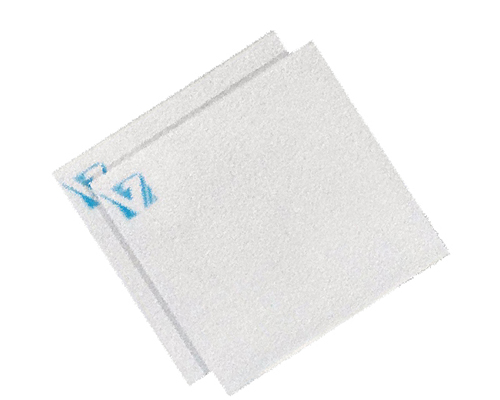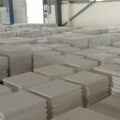The foam ceramic filter plate is widely used in aluminum foundries because of its convenient use, good filtering effect and low price. In developed countries, more than 50% of aluminum alloy melts are filtered by foam ceramic filter plates. The ceramic foam filter plate is generally a filter with a thickness of 50 mm and a length and width of 200-600 mm, and the porosity is as high as 0.8-0.9.
The ceramic foam filter plate is brittle and easily damaged. Generally, it is only used once. If it is used twice or more, melt insulation measures must be adopted. However, it is generally not allowed to use more than seven times. A new filter plate must be replaced within 48 hours.
Pay attention to the following issues when using foam ceramic filter in foundries
(1) Choose the appropriate foundries ceramic filter. When selecting foam ceramics, the requirements for filtration accuracy should be considered first. In most cases, the use of 30PPI foam ceramics meets the requirements. If the metal is particularly dirty, 20PPI ceramic foam can be used for pre-filtering to prevent premature blockage of 30PPI ceramic foam. Second, consideration should be given to the casting speed, the flow rate of liquid aluminum per unit time, the original cleanliness of the melt, the highest content of inclusions in the metal, and the total throughput of the metal.
(2) Install ceramic foam filter correctly. Usually, foam ceramic filters are arranged horizontally in the filter box, allowing the aluminum water to pass vertically downwards or vertically upwards. When the lower casting method is adopted, the aluminum liquid rises evenly, there is no turbulence when it hits the filter, it can ensure the even start of the filter, and reduce the risk of channeling. In addition, when installing the ceramic foam, the assembly part must be sealed with refractory fiber to eliminate the possibility of any bypass.
(3) Before filtering, it is best to heat the foam ceramic with a heater to close to the melt temperature, so as to ensure that when the aluminum liquid flows to the foam ceramic, the pores will not be blocked due to the solidification of the metal.





